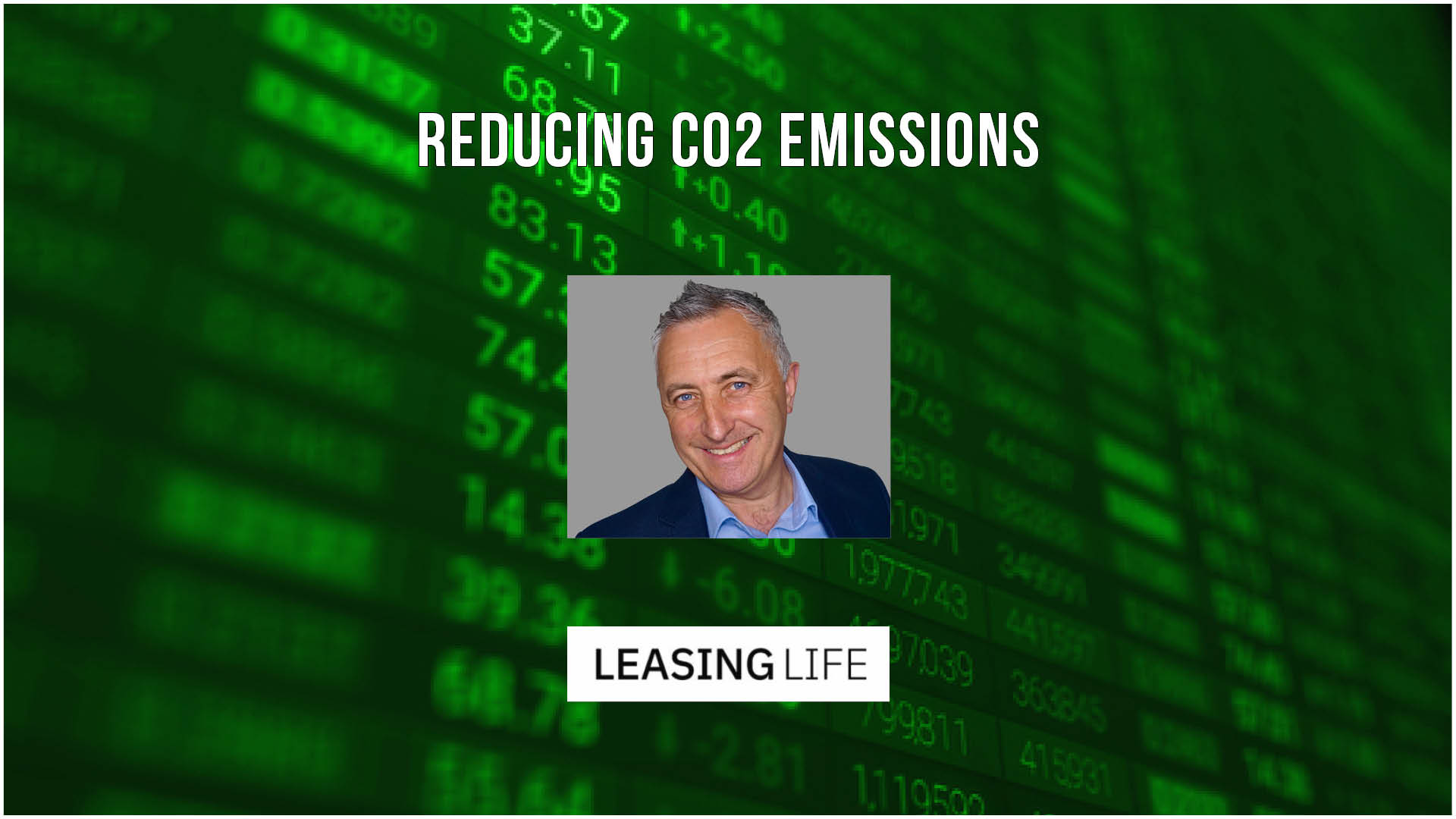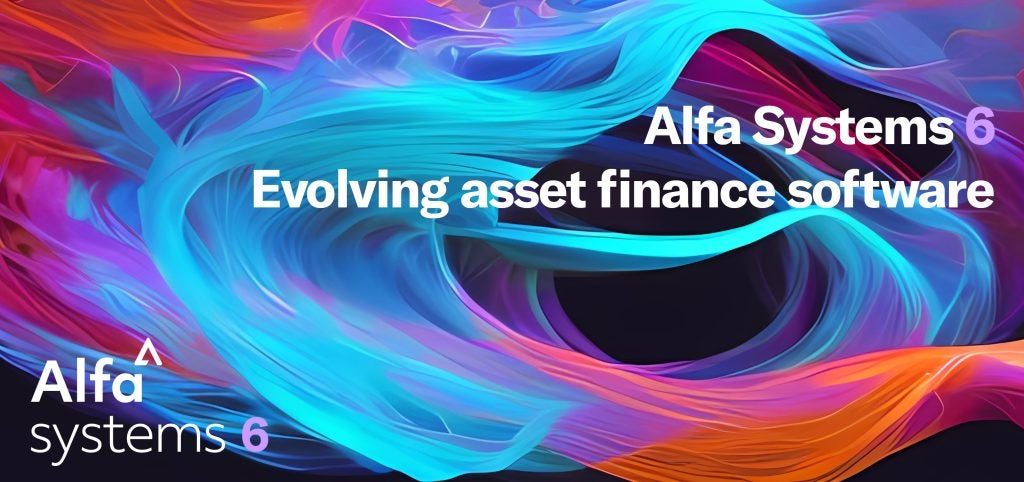
As the build-up of greenhouse gases in the atmosphere continue to rise, how can the asset finance community play its part in reducing CO2 emissions? Equipment finance and motor finance consultant Andy Page looks at some of the options
For centuries, the finance industry has been a hidden culprit in global warming. Is it now time for finance to right its wrongs and enable the solutions?
The short answer to the question ‘can finance save the planet?’ is of course no – it will be people and the equipment and the processes people create that will move us all to carbon neutrality. But – it will be financing that enables it all.
The ultimate key to carbon reduction is our move away from a linear economy toward a circular one.
Throughout history our economic activity has revolved around the linear activities of ‘taking, making, owning and disposing’ but this has been the driving factor behind the record levels of carbon we now see in our atmosphere.
The global average amount of atmospheric carbon dioxide hit a new record high in 2019 at 409.8 parts per million, with geological records showing a previous high 300,000 years ago of 300 parts per million.
How well do you really know your competitors?
Access the most comprehensive Company Profiles on the market, powered by GlobalData. Save hours of research. Gain competitive edge.

Thank you!
Your download email will arrive shortly
Not ready to buy yet? Download a free sample
We are confident about the unique quality of our Company Profiles. However, we want you to make the most beneficial decision for your business, so we offer a free sample that you can download by submitting the below form
By GlobalDataThe annual rate of increase in atmospheric carbon dioxide over the past 60 years is about 100 times faster than previous recorded natural increases (1). So, the call for radical change is rightly very loud.
From linear to circular
Moving to a circular economy is almost completely within our ability – home recycling of our waste is a simple example of an easy step we have already taken in this direction.
The circular economy starts with the input of renewable energy, for example energy generated from non-carbon emitting sources. Today 23 per cent of the UK’s energy comes from renewables, 47 per cent still from fossil fuels, 20 per cent from other sources, eg nuclear, and 10 per cent bought in from other countries (2).
The large-scale infrastructure needed to move more energy generation to renewable sources, eg new solar and wind farms, battery storage and other new technologies will need large-scale financing.
A great way to raise capital for these types of projects is through the issuing of green bonds – $157bn of these were issued in 2019 (3), and some of these returned over 7 per cent to investors, with the current average UK return on shares at 5 per cent.
Governments are also getting in on the green bond act to drive momentum behind this move, Germany has issued three green bonds, the most recent of which in May raised €6bn (4).
From a standing start in 2008 the global market for green bonds as at the end of 2019 stands at $500bn (5), demonstrating there is already good appetite for these.
The European Council of Ministers recently approved EU borrowing of up to €750bn (6) for post-pandemic recovery which has been conditioned to be climate recovery linked, so there are undoubtedly many more green bonds to come.
The next step in the move to a circular economy is the funding of a redesign of goods to use recyclable parts with longer lifespans.
Redesign and recycle
Take your average passenger car, 75 per cent of which is currently recyclable. The remaining 25 per cent is a mix of materials the recycling industry calls ‘fluff’ and is mostly sent to landfill (7). The metallic elements of cars are easier to recover and recycle than plastics which are after all fossil fuel-based. So one redesign option would be to move more car parts back to metallic materials. The plant needed to recycle these metallic materials is widely available and economic to operate and finance using conventional funding.
Redesign also needs to build in lower levels and longevity of consumable parts and their servicing. You may be surprised to learn that a good example of this can be seen in a bridge.
The Millau Viaduct in France is the world’s tallest bridge. The tender to build and operate the bridge included an obligation to maintain it, so the winning bidder automatically built-in longevity of materials and their servicing needs (8).
The reduction of waste during the manufacturing process is the next step. Again, the redesigning of materials used in the manufacturing process will help both reduce and increase the recyclability of any waste created.
The widespread lockdown during the Covid pandemic necessitated a shift to home working with what was essentially unproductive time commuting, partly turned into extra working hours which gave a boost to productivity.
The balance of saved commuting time was used on an improved work/life balance which positively impacted on people’s health and reduced accidents. Reduced commuting helped improve air quality and with fewer flights, clearer skies were attributed to a reduction in aviation emissions. In total around 29 per cent of current atmospheric carbon dioxide derives from transport, including commuting (9).
The next step toward the circular economy is in the transport of people, parts and products by reduced, then zero, emission means.
Zero-emissions transport
Original Equipment Manufacturers (OEMs) are making great steps in this with alternate fuelled and zero-emission trucks and buses already on the market. Large-scale uptake is already happening with fleet operators investing in biofuel and gas-powered units, bringing good savings in fuel costs along with reduced emissions.
Zero-emission passenger transportation seen in urban bus and tram networks has boomed in recent years around the world. In 2018 the European electric bus market alone increased by 48 per cent over just the prior year. 2019 saw a tripling in the number of electric bus registrations in Western Europe to around 5,000 units in total. The global park for electric buses is expected to surpass 600,000 units by 2025 (10).
In addition to the use of lower-emission transport, key also is maximising the efficient use of its routing.
Most new vehicles also now come equipped with telematics. Better use of this technology will not only potentially improve efficiency but also provide a platform for the delivery of a whole new set of services. For example, a truck could report servicing needs directly to its repairing dealer.
They can then best organise parts and the booking of the time needed to undertake the service or repair. This will reduce downtime with a resulting increase in the productivity of the vehicle.
Artificial intelligence and autonomous driving is also now being built in to vehicles and has the potential to help further improve road safety, emissions and fuel usage.
Closer to home: CO2 emissions
Lastly, the Covid pandemic also highlighted the dependency of the supply chain on goods sourced at a great distance from home markets. The relocating of manufacture closer to market will bring much improved efficiencies in supply time and transport emissions and cost.
Mobile assets such as commercial vehicles are easy to finance under normal means. However, all this new technology brings increased levels of perceived risk for funders. The largely unproven reliability and the fear of short-term obsolescence curtails credit appetite. The solution will be the forming of partnerships between the funders (possibly with the backing of state-provided funds or guarantees) and OEMs to give the comfort needed to finance the new technologies. For example, the OEMs can help bring confidence in their products by offering some support in their adoption through longer warranties especially on batteries and the offer of lease and buy-back facilities to offset the perceived risk in unknown second lifevalues.
An OEM buyback will also facilitate the move away from ownership to usage of assets. Consumers needs change and along with those changes comes their need for different supporting goods and services. Financing can play a big part in facilitating the flexibility of supply. A recent example of this can be seen in the personal mobility sector, where there is a move toward shorter-term use-based subscription services where vehicles can be paid for and then exchanged or returned at short notice.
The growth in the financing of mobility in this way is an example that it is the ‘use’ that matters to the consumer not necessarily the ‘ownership’. Although these are typically priced higher than longer-term funding it is the flexibility and potential efficiencies of the use of their capital which is attractive to their users.
The entry point for the customer with usage financing (eg deposit etc) is lower along with the normal periodic repayments as customers are not financing and repaying the whole cost of the asset. The reduced repayments give earlier profitability which can then be reinvested sooner back into more efficient means of production as well as preserving capital reserves and working capital facilities for other investments.
The matching of repayment to usage also aligns cashflow to work flows and allows the more efficient drawdown of the working capital needed to cover it. For example, if a truck operator experiences reduced usage through the loss of work their repayments also fall, along with their requirement for the working capital needed to cover them. Conversely, if they gain new work it is simple to increase the repayments to match the usage and then again only call on working capital when needed to meet the increase.
Usage financing has several benefits for the circular economy on its completion too. As there is no disposal for the customer to worry about other than potential return conditions, the time needed and cost to return and replace with more efficient or productive assets, is reduced. In the case of an OEM providing the buyback, this also keeps the goods within their control, enabling them to recycle or repurpose them within their existing manufacturing processes and skill sets. Consumers and operators are not best placed to ultimately recycle goods, as occurs with ownership, so OEMs taking the assets back should also prove much less wasteful.
A role for OEMs
The OEMs also have a great place to play in the next step in the circular economy. Repair & Repurposing for Re-use is key to keeping goods in useful circulation. Following return by the consumer, the OEMs have the opportunity instead of recycling the whole asset, to refresh them instead with later updates in technology to provide improved efficiencies from further operation and enable the offering of the latest add on services.
The cost of repairs and repurposing can be added to the buyback and the goods then resupplied and financed at that new gross cost. OEM captive finance companies are already well adept at financing refurbished and repurposed goods in this way.
However, OEMs may need to offer some comfort to the wider finance community to foster their involvement through new warranties and perhaps even re-marketing partnerships in the event of unplanned return or further buy-backs. The last part of the circular economy is in the final complete recycling of the goods, when it becomes uneconomical to repair or repurpose.
Ideally of course, there should be no waste at all from recycling where everything should be used up somewhere – for example – remember automotive ‘fluff’? Currently, trials are taking place to burn this as part of the cement manufacturing process with the heat by-product also used to generate energy.
It is clear that economic and environmental sustainability are one and the same. Linear economies are ultimately unsustainable without a switch to renewable energy and the elimination of waste, so a move to circular use is inevitable. The move would not only offer significant new growth opportunities for businesses but also sustainable employment and profitability for all
Key drivers
So, the key drivers to the move, first is the acceptance of OEMs in their whole life responsibility for the goods they produce. Next is their support to forming partnerships with funders to smooth the financing of rapidly changing technologies. The state can also help here – in 2020 the UK government provided over £68bn of loans from the state-owned British Business Bank through a network of approved independent lenders to help businesses affected by Covid. Similar schemes could be provided to enable the move to a circular economy.
Finally needed is the broad-scale move to the ‘use’ of goods as opposed to the ‘ownership’ of them. So, returning to the question we opened with: ‘can finance save the planet?’ the answer is still no, BUT finance can indeed right its wrongs and jointly with the right partnerships, can create the solutions needed to put the goods and processes required into the hands of the people that will save the planet.
Notes:
- https://www.climate.gov/news-features/understanding-climate/climate-change-atmospheric-carbon-dioxide
- https://grid.iamkate.com
- https://www.renergen.co.za/stefano-marani-an-open-letter-to-andre-de-ruyter/
- https://www.reuters.com/business/sustainable-business/bumper-demand-german-30-year-green-bond-belies-market-sell-off-2021-05-11/
- https://www.charteredbanker.com/resource_listing/cpd-resources/beyond-the-green-the-changing-face-of-sustainable-finance.html
- https://en.wikipedia.org/wiki/Next_Generation_EU#Climate_action
- https://autorecyclers.ca/2007/auto-fluff-what-to-do-with-the-remaining-25-percent/
- http://www.omegacentre.bartlett.ucl.ac.uk/wp-content/uploads/2014/12/FRANCE_MILLAU_PROFILE.pdf
- https://www.epa.gov/ghgemissions/sources-greenhouse-gas-emissions
- https://www.sustainable-bus.com/electric-bus/electric-bus-public-transport-main-fleets-projects-around-world/







